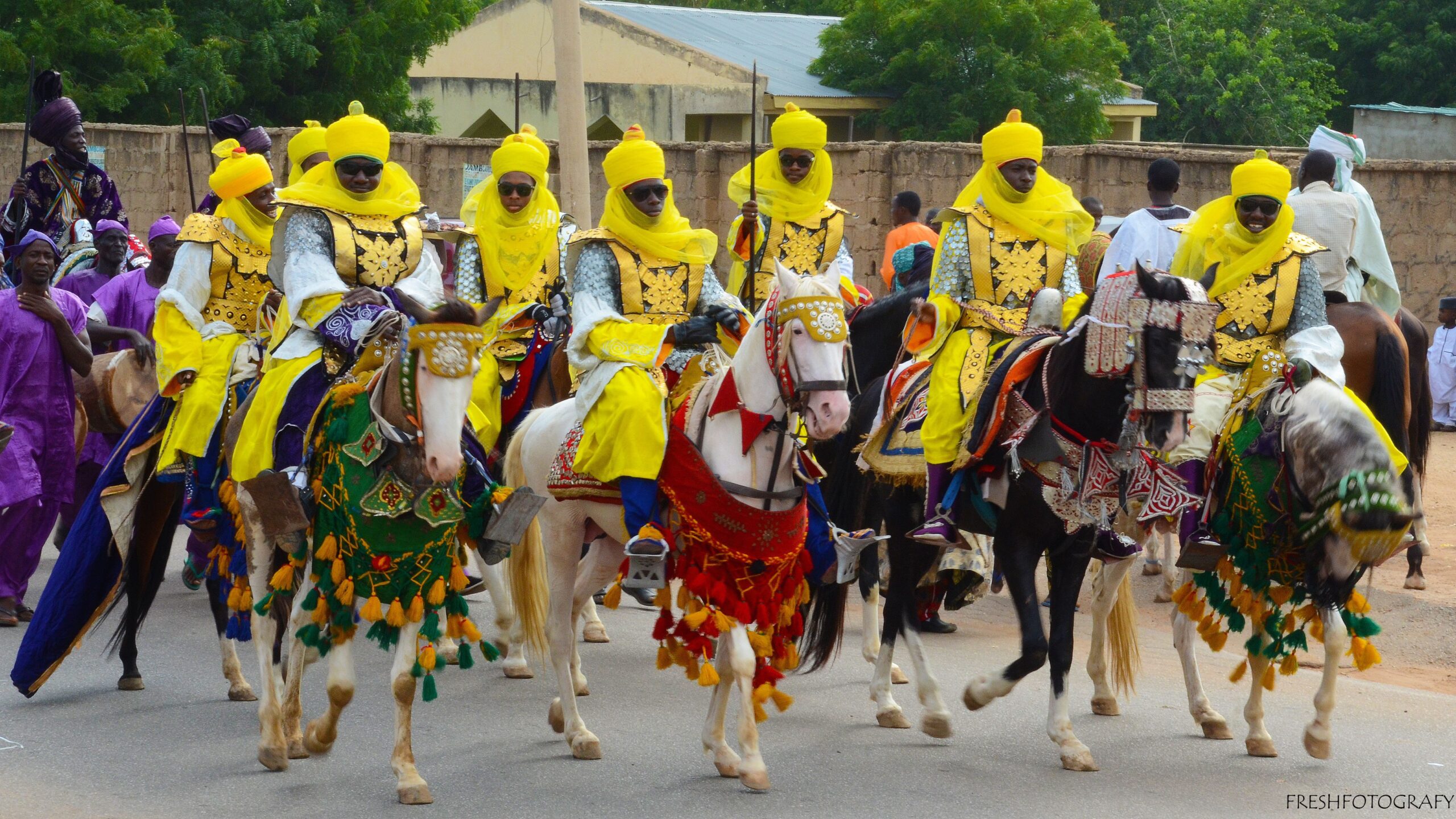Brief History
Gani Festival: It is an annual cultural festival celebrated in the ancient city of Daura. The Festival derives its name from the Hausa word ‘Gani’ meaning “meeting” but with the introduction of Islam, Gani festival took a new form of an Islamic festival of Eid-el Maulud to commemorate the birth of Prophet Muhammad (SAW). The occasion is celebrated with a colourful durbar led by the Emir amidst drumming, singing, dancing, acrobatic displays and comedy. Other sides of attraction include a display of horsemanship, costumes, attires and historical artifacts. Gani is celebrated every 12th of Rabiul Awwal of the Islamic calendar.
Sallah Festival: The word ‘Sallah’ originated from the Arabic word ‘Salat’, which means prayer but the word is also used in Hausa to refer to the festivities that takes place during the Eid-el fitr and Eid-el Kabir which include a colourful durbar popularly called “Hawan Sallah”. The Durbar is led by the Emir to express joy and happiness for the Sallah day and to entertain people on the cultural and historical heritage of the people of Katsina. Besides this, it is regarded as a mark of homage and loyalty by the District Heads to the Emir. The durbar also served to unite the
people, bring them closer to Government, and give them opportunity to listen to policy statement at firsthand. Ummarun Dallaje the first Fulani Emir of Katsina who reigned from 1807 to 1835 introduced Hawan Sallah according to historical traditions.
Jaci Festival: Fishing is one of the major occupations of the Hausa people. It has been in existence since time immemorial and practiced mainly by people who live along the banks of rivers, lakes and large streams. Jaci is a small village in Mani Local Government areas of the State. It is located along a major waterway popularly known as ‘Fadamar Jaci’. The Late Emir of Katsina Muhammadu Dikko initiated Jaci fishing festival around 1905 when he was the District Head of Mani. He was said to have developed interest for the site whereby he goes there annually for fishing and hunting in the dry season. After his death, his successor Alhaji Usman
Nagogo (1944 – 1981) intended to continue with this tradition initiated by his father. Hence, he continued with the annual visit to the site for the fishing and hunting in company of British Colonial officials resident in Katsina. During the annual gathering fishermen gathered at the site from different parts of the defunct Katsina Province and from the neighbouring Niger Republic. However, shortly before the death of Alhaji Sir Usman Nagogo the festival is said to have ceased temporarily until it was revived in the year 2000.
Kalankuwa: It is a post harvest youth festival performed in many villages and town across the state to express happiness for a successful completion of cropping season and to celebrate the coming of ‘Kaka’, which is a time of prosperity in terms of food and increased economic and social activities. It also provides an opportunity for the youth to choose marriage partners. However, the Kalankuwa in Katsina as we know it today is said to have started around 1935. It takes place annually in villages like Shinkafi, Dankanjiba, Dutsen Safe, Rimin Guza, etc. One of the most important activities during the early stages of Kalankuwa is a kind of drama in which
the youth imitate the Hausa traditional form of authority, which emphasize the role of Sarki (King) as the political head of the community as well as the custodian of the people’s culture. Also in the Kalankuwa traditional wrestling, boxing, singing and dancing takes place.
Festivals and Traditions
- Gobarau Minaret: The Gobarau Minaret was constructed over 300 years ago – of baked clay and mud. It is a 50-foot or 15-meters minaret located at the centre of Katsina city. The tower has now become a symbol of the city. It is said to have been completed during the reign of Sarkin Katsina Muhammadu Korau (1398-1408 AD), the first Muslim king of Katsina. Over the centuries, it has been used as a central mosque, an Islamic centre for higher education, and a high tower for spotting invading armies.
- Katsina City Gates: Constructed about 900 years ago during the reign of King Murabus, the Katsina city wall surrounds the city and has seven different gates for access. The ancient seven gates of the city wall continue to fascinate visitors to the town, and something that faraway tourists have heard about and wish to see.
- Emir’s Palace In Katsina: The Emir of Katsina Palace is a symbol of culture, history and traditions
of Katsina. The Katsina Royal Palace, also known as Gidan Korau, is a huge complex located in the centre of the ancient city.
- Kusugu Well, Daura: The Kusugu well is where the giant snake Sarki was killed by sword by Bayajida in the 10th century because the snake would only allow the people of Daura to fetch water from the well only once a week. The well and the sword that was used to kill the formidable snake can still be seen by tourists today.
- Old Katsina College: The Old Training College in Katsina was built with red-baked city mud and clay and opened in 1921. It is the oldest teacher-training college in Northern Nigeria. The college counts Alhaji Sir Abubakar Tafawa Balewa and Alhaji Sir Ahmadu Bello among its graduates. It was declared a Historic Monument on April 23, 1959.
Tourists Attractions and Locations
- Gobarau Minaret
- Katsina City Gates
- Old Katsina College
- Emir’s Palace In Katsina
- Kusugu Well, Daura

